This is one of the most wanted artifacts in the world. The last "certain" place where the treasure was kept was the castle in Królewiec. At the end of the war, the Germans took it away and hid it somewhere. In Poland alone, more than 20 places where it allegedly was located were searched. Nothing of that. Or maybe the Amber Room is long gone? There are witnesses who claim that she did not survive the turmoil of war ...
The Amber Room is a complete palace decoration made by Gdańsk masters. In 1716 the Prussian king Frederick William gave it as a gift to Tsar Peter the Great. During the Second World War, the Germans stole her from the palace in Tsarskoye Selo near St. Petersburg.
The chamber went to Królewiec. It lay hidden in chests, in the basement of the Königsberg castle. What happened to her later? This is not known, but when the Russians captured Królewiec, they did not find the amber treasure.
Mysterious cargo
Włodzimierz Antkowiak in his book "Poszukiwacze lost chamber" writes:
There are at least several hundred places where people have searched for the Amber Room so far, not only in Poland, there have also been at least several thousand seekers of various nations, and you can have certainty that more will emerge.
An amber masterpiece from Königsberg or Tsarskoye Selo, if (until) it is not found, has every chance of becoming one of those immortal treasures whose the following will always be sought: The Holy Grail, the tombs of Alexander the great, Attila and Genghis Khan, the treasure of the Oak Island pirates, the Inca treasure of the Llanganati mountains in Ecuador, and so on.
The author lists over 20 - more or less probable - locations in Poland alone, where treasures were sought. It concerns mainly the northern and south-western part of the country, i.e. German territory before the war. In Pomerania, Warmia and Masuria or Lower Silesia, there are many places combined with sensational stories about visits to Nazi trucks just before the end of the war, from which soldiers unpacked large boxes with mysterious cargo.
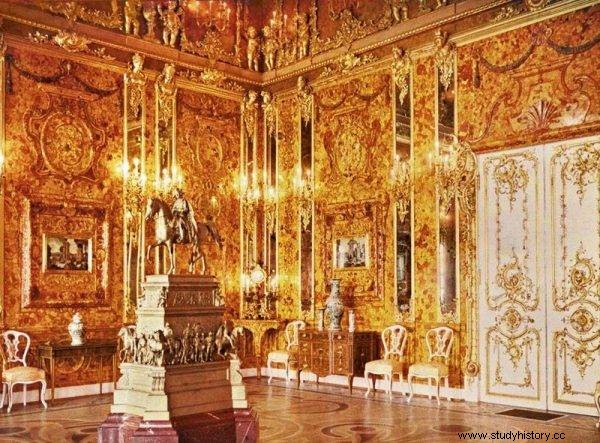
The original Amber Room in 1917.
After being removed from the bombed Königsberg, the work of art was to be delivered, among others, to to Dzików Iławecki, where the palace of the Schwerin family was located. The amber treasure was also to be hidden in the castle in Lidzbark Warmiński, in the former Teutonic walls in Człuchów or in another Teutonic stronghold - in Pasłęk, in the ruins of a medieval castle in Bolków in Lower Silesia, in the picturesque Srebrna Góra, in the Międzyrzecki Fortified Region in the Lubuskie Voivodeship in the depths of the Vistula Lagoon or Lake Resko Przymorskie in the West Pomeranian Voivodeship, in the wrecks of German ships sunk in the Baltic Sea during the escape from Königsberg to the Reich in 1945 - "Gustloffa" or "Karlsruhe", in the complex of Nazi bunkers in Mamerki in Masuria - and in many other places.
The history of the search for the Amber Room is - so far - a colorful, but still a history of disappointments, full of grotesque and funny situations.
Radiesthetes and jackhammers
In the 1980s, the public opinion of the People's Republic of Poland was heated by exciting news. The Amber Room has been found! The Germans hid it deep in the basement of the Teutonic castle in Pasłęk. Włodzimierz Antkowiak describes in his book:
In 1980 a radiesthet, a certain Edward Trusielewicz from the village of Dywity near Olsztyn, with conviction that left no doubt announced during a public screening that the Amber Room was ... in within the castle tower at a depth of ten meters . It is bricked up and probably access to it is mined. But the chamber rests there peacefully, and one only needs appropriate resources and willingness to reach it.
His visions were confirmed by Dr. Lucjan Nowak, a teleradiest from Katowice, who "sensed" about a ton of amber in the same place and at the same depth .
A year later, in June, a search was started, led by a team assembled by the Ministry of Culture and Art. It seemed that the treasure was at hand, but the research was interrupted by the introduction of martial law and the generally difficult situation in the country. Work was continued already in the Third Polish Republic. Eventually, it was not possible to find the chamber.
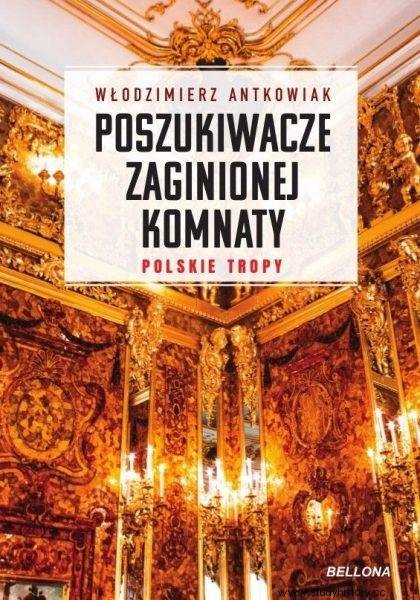
The text was created, among others based on the book by Włodzimierz Antkowiak "Poszukiwacze zaginkowej chamnaty", which has just been published by the Bellona publishing house. Buy now "
We know many similar "almost certain" hiding places. Some of the smarter owners or tenants of objects that are to hide treasure in their guts, were able to turn the legend into a marketing asset, attracting thousands of tourists to this day. This is the case, for example, in the case of the Nazi bunkers in Mamerki in Masuria.
There were also those "seekers" who were obscured by common sense by the specter of the discovery of the chamber. In 2009, in the Międzyrzecz Fortified Region in the Lubuskie Voivodeship, two amateur seekers literally decided to get to the huge concrete walls of the complex, behind which the treasure was allegedly hidden. In the book "Raiders of the lost chamber" we read:
in the middle of the night they were photographed by several local newspaper photojournalists and caught red-handed by the police they notified when they tried to break into the bunker with jackhammers marked with the number 716A. During their detention, they did not resist, they only regretted that they had been caught just before the memorable discovery.
Gauleiter Koch is confusing the lead
The only certain knowledge about the chamber was taken to the grave by a few people - Nazi dignitaries and officials from Królewiec who were closest to the treasury on the days when its fate was at stake. They were well aware of the great value this masterpiece would have in the eyes of the Russians and the Allies after the war. They knew it could be a bargaining chip they would buy their lives for.
The gauleiter of East Prussia - Erich Koch, who, despite the death sentence, died a natural death many years after the war in a Polish prison effectively used it. By what miracle? For the Security Service (as well as the Soviets who monitored the case), Koch's knowledge of the room was crucial. The communist security service hoped to get her out of the Nazi criminal until the end.
Erich Koch - the Reichs Commissar for Ukraine and the last President of East Prussia - fled Königsberg to the Reich shortly before the end of the war. He fell in 3 years after the war in Hamburg, detained by the British. Both People's Poland and the USSR applied for Koch's extradition. Eventually, the English handed it over to Poland. The trial did not begin until the summer of 1958. Eventually, Koch heard the sentence - death. He was found guilty of murdering 400,000 Poles.
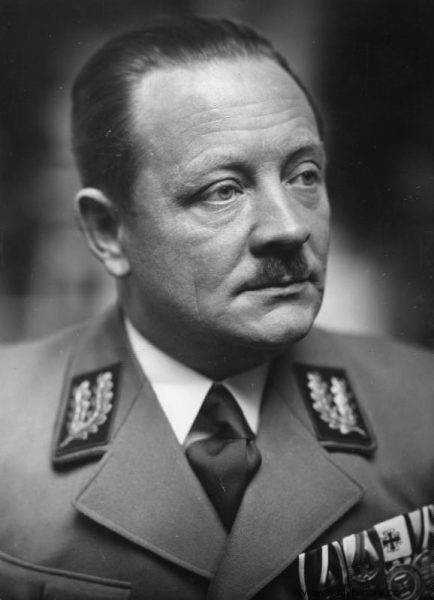
Erich Koch - the Reich Commissar for Ukraine and the last President of East Prussia - fled Königsberg to the Reich shortly before the end of the war.
It seemed that the last hour had struck for the criminal, and yet ... time passed, and Koch was still alive. He was imprisoned in Barczewo. He was the only prisoner of the plant with a special cell. Ultimately, he died only in 1986 - of natural causes. Koch knew how to act to delay his end as long as possible. Over the years, his body weight did not exceed 50 kilograms, so technically he was not healthy and he did not meet the conditions of the execution. There is no doubt, however, that the Nazi criminal also skillfully played with interest in the Amber Room.
In 1964, people from the KGB visited him in prison. During the recorded meeting, Koch suggested that the chamber did not leave Królewiec at all, that it was hidden there so far in a mysterious bunker . He even offered to show this place, if the Russians would arrange for him a trip to Konigsberg (Kaliningrad). Apparently, preparations for such an escapade were ongoing. Ultimately, however, it did not come to fruition.
For years, the halo of secrecy surrounding Koch favored all sorts of crooks trying to make a deal. It did not bypass the Barczewo prison guards or people who pretended to be them. Antkowiak says:
In the nineties, the International Search Agency was contacted twice by telephone by a person who introduced himself as a "guard from the Barczewo prison" and proposed selling Koch's documents and "memorabilia" of the criminal . Another "gatekeeper" offered "valuable information" allegedly obtained in confidence from a gauleiter .
Koch himself made a will several times in prison, he also took notes. Years later, various mysterious "collectors" tried to trade it. In 2003, one of the weekly magazines published an excerpt from Koch's notes that he had hidden the room in his estate in Krasne in Mazovia. Ultimately, however, Koch's will was in the archives of the Institute of National Remembrance. There is no mention of the Amber Room in it.
Treasure in Mamerki
Another trail connected with the Gauleiter of East Prussia led to Masuria. In the 1960s and 1970s, the Security Service conducted an extensive search for a room in Mamerki near Węgorzewo, and to this day it is one of the "hottest" addresses in Poland, associated with the Amber Room. In his book, Włodzimierz Antkowiak writes:
During World War II, this was the headquarters of the High Command of the Land Forces - Oberkommando des Heeres (OKH) - codenamed "Anna", eighteen kilometers to the northeast from the former Hitler Wolfschanze headquarters in Gierłoż .
A Headquarters is a powerful facility. It consisted of 250 buildings (30 reinforced concrete bunkers have survived to this day). 1,500 soldiers were barracked here. Several dozen generals and field marshals worked on the spot. There were, among others casino, hospital and sauna.
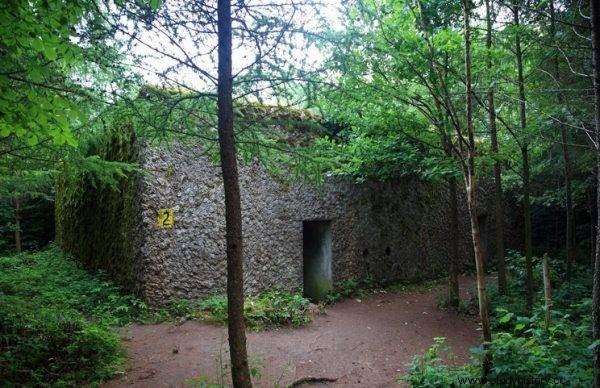
The headquarters of the Supreme Command of the Land Forces (OKH) in Mamerki
After the war, a former German soldier who served in OKH reported to the security service and claimed that in the winter of 1944/1945, the Germans had brought crates with mysterious loads here . The case interested the communist services. In the 1970s, Koch was here with the SB functionaries. From then on, the former bunkers were associated with the chamber. Is it right? Antkowiak comments:
Koch was playing a complicated game of life at the time, it gave the impression that he had a lot to sell to SB and KGB officers, and the fact that - it seems - with intelligence, especially cleverness, as a rule better than the interlocutors, allowed him to survive the worst years.
One thing is certain - thanks to the mysterious history and skillful marketing, the facilities in Mamerki have become a local attraction, visited by thousands of tourists and history enthusiasts.
The Chamber… does not exist?
There is one more - the saddest - alternative for thousands of treasure hunters and history enthusiasts. Such that the chamber in the last days of the war was simply… destroyed. In 1971, television in Poland and the GDR broadcast a documentary by Ryszard Badkowski, The Secret of the Amber Chamber. It caused a great stir and a response from people claiming to be knowledgeable about the treasure.
A letter from Liesel Amm, a teacher from Berlin, came to television in East Germany, who claimed that at the end of the war she was friends with the daughter of Dr. Alfred Rohde, the curator of the museum at the Königsberg castle, where the treasure was hidden in the cellars. Rohde was personally responsible for ensuring that the valuable work of art survived the turmoil of war. It wasn't easy. In the summer of 1944, the Allies carried out carpet raids on Królewiec. According to the woman, after the second night attack, the room was destroyed. As she wrote:
I met Dr. Rohde here who must have come shortly before me. (...) He had the appearance of a devastated man, his face was ashen. We exchanged a short greeting and then I asked the question:"What about the Amber Room?" He replied, "Everything is lost." He led me towards unfamiliar cellars and then I saw a molten mass with charred pieces of wood in it. Dr. Rohde was devastated. We never talked about the Amber Room after that.
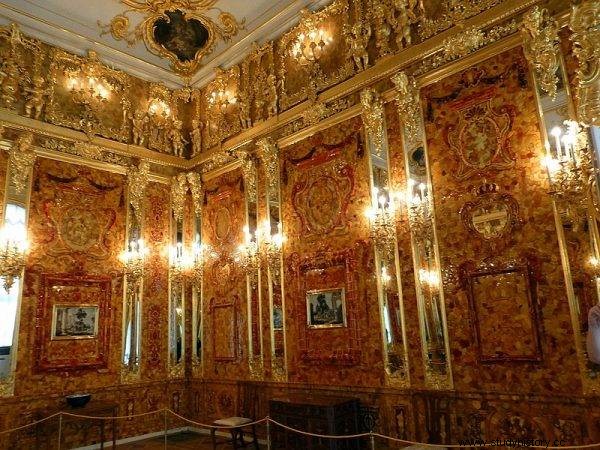
Fragment of a copy of the Amber Room in Tsarskoye Selo
So is the breathtaking product of the 18th-century amber masters only a thing of the past today? The woman's testimony sounds credible, but journalists in Germany have already become interested in her report. Liesel Amm told them her story once more, adding that the remnants of the molten Amber Room looked like honey. It was decided to check this and burned some amber for experimental purposes. It turned out that under the influence of fire it took on a black and green shade, not resembling honey at all.
Is this enough to undermine a woman's account? Researchers of the history of the Amber Room emphasize the lack of other, similar testimonies, for example from the employees of the castle museum. The possible destruction of the installation, weighing several tons, must have resulted in an attempt to save even a part of the treasure. Secondly, just cleaning the molten amber would take a lot of time. Nevertheless, there are no reports of witnesses who would participate in it.
According to Włodzimierz Antkowiak, it is also unrealistic that Dr. before the Gauleiter Koch the fact of the destruction of the chamber, and it must have been so, since it was formally in Królewiec until the very end. Is it enough to dispel doubts? It is only certain that even if there were irrefutable evidence of the destruction of the treasure, the chamber would still provoke new masses of explorers and enthusiasts, believing that they would be lucky and honored to find this stunning masterpiece.
